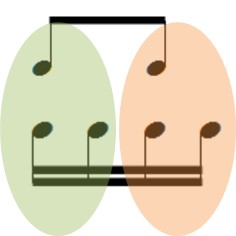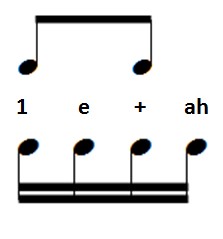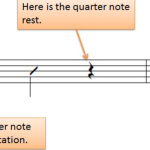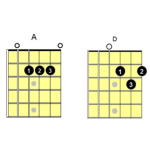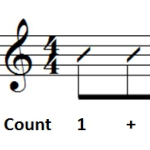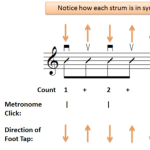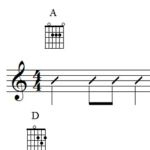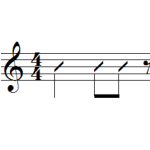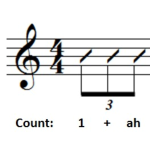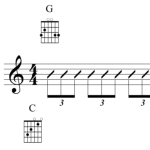Introduction
For many guitar players, understanding and performing 16th note rhythms can be tricky and sometimes downright confusing.
The good news is that it doesn’t have to be that way.
Once you understand some simple concepts, you will understand how 16th notes really work. Then with a bit of practice, you will be able to easily master them on your guitar.
In this tutorial, we will cover the basics of counting and performing sixteenth notes.
In previous tutorials, Playing Rhythm Guitar Basics Parts 1-11, we looked at whole notes, half notes, and eighth notes. We’ve also covered triplets in Understanding Triplets Tutorials 1-3.
So if you are not sure of how to count and perform these other note values, be sure to check out the previous tutorials. You will find the links in the “Related Posts” section at the bottom of this tutorial.
16th Notes – The Basics
In 4/4 time, sixteenth notes divide the beat into four notes of equal duration.
Here is how to count 16th notes…
 To get a deeper understanding of how 16th notes work, we need to return to quarter notes and eighth notes.
To get a deeper understanding of how 16th notes work, we need to return to quarter notes and eighth notes.
A Quick Review of Quarter Notes and Eighth Notes
A quarter note lasts for one beat in 4/4 time.
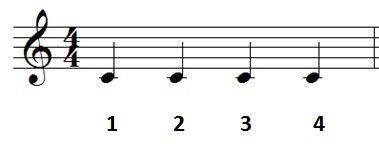 We can have four quarter notes in one measure of 4/4.
We can have four quarter notes in one measure of 4/4.
An eighth note is sustained for half as long as a quarter note. An eighth note divides the beat into half and therefore receives half of a beat.
 We can have eight 8th notes in one measure of 4/4 time.
We can have eight 8th notes in one measure of 4/4 time.
It’s Clapping Time!
Now it’s time to clap some basic rhythm patterns. Count out loud as you clap the rhythm patterns in examples 1 and 2. Repeat each example 4 times.
Example 1.
 Did you notice anything when you clapped these two examples? If nothing comes to mind, clap examples 1 and 2 a few more times each.
Did you notice anything when you clapped these two examples? If nothing comes to mind, clap examples 1 and 2 a few more times each.
So did you notice that you clapped the same number of times in each example? In example 1, you clapped a total of 8 times. In example 2, you also clapped 8 times.
If you clap both examples at the same tempo, you will notice that the eighth notes sound like quarter notes at double the speed.
Instead of example 1 unfolding over the space of two measures, example 2 compresses the pattern so it occurs in half of the time; taking just one measure.
Let’s take this a step further…
Clap the following rhythm:
 If you double the speed you clap this pattern…
If you double the speed you clap this pattern…
 It will sound like you are playing one measure of 16th notes:
It will sound like you are playing one measure of 16th notes:
 Time to Dig a Little Deeper into 16th Notes…
Time to Dig a Little Deeper into 16th Notes…
Now let’s compare how we count 8th notes with how we count 16th notes.
8th notes are counted as:
One 8th note is equal to two 16th notes.
This is why the “1” and the “+” occur at the same time whether you count 8th or 16th notes:
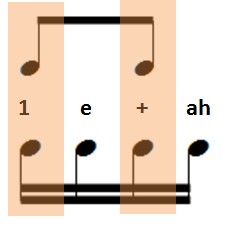 The two other 16th notes occur halfway between these two notes.
The two other 16th notes occur halfway between these two notes.
This means if you were to count 16th notes and only clap on the “1” and the “+”, it will sound like you are clapping straight 8th notes.
Rhythm Practice
Now here are some 16th patterns for you to practice. Count out loud as you clap these patterns. Also practice these patterns with a metronome.
Rhythm Exercise 1.
Rhythm Exercise 2.
Rhythm Exercise 3.
Rhythm Exercise 4.
Rhythm Exercise 5.
 Once you feel comfortable clapping these rhythms, you should apply them to the guitar. For that you will want to use alternate picking, we will look at this in detail in an upcoming tutorial.
Once you feel comfortable clapping these rhythms, you should apply them to the guitar. For that you will want to use alternate picking, we will look at this in detail in an upcoming tutorial.
Conclusion
This rhythm guitar tutorial, just scratched the surface of 16th notes. There many different rhythm patterns that are possible with 16ths. In later tutorials we will look at these additional fun rhythm patterns.
Recommended Resource
Isn’t it time to get your hands on a proven, fast and easy way to learn the basics of music theory for guitar? The Absolute Essentials of Music Theory for Guitar lays out what you need to know about guitar music theory so it’s crystal-clear.
Mastering the basics of guitar theory will open up a whole new world for you. You will learn guitar faster and feel and hear big improvements in your guitar playing.
Get started now and take the mystery out of music theory so you can learn guitar faster




